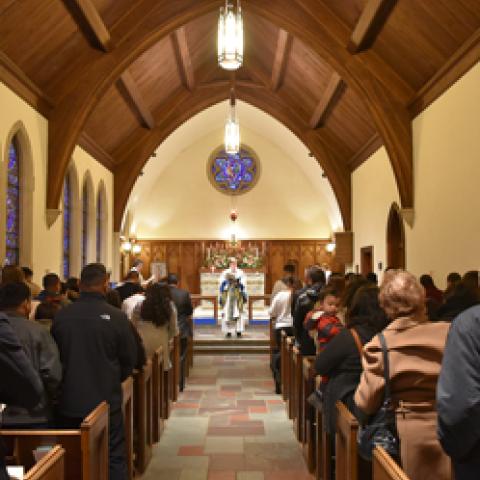Schoenstein & Co. has built a new four-manual console for Aeolian-Skinner Opus 1399 of 1962 at the Cathedral of St. Philip in Atlanta, Georgia. The cathedral’s comprehensive music program, headed by organist/choirmaster Dale Adelmann and his associate David Fishburn, includes an extensive series of regular recitals as well as other programs involving visiting artists. The console includes the most advanced playing aids and a layout of stops and controls that promotes efficiency and ease of performance. Console mobility is another important factor. Also, provision has been made to accommodate the addition of a large Antiphonal organ in the west gallery at some point.
Since it was impossible to fit all of these requirements into the existing console, which required full renovation, it was decided to start fresh. The new console has ivory key coverings, 181 drawknobs, and a Peterson ICS control system with 256 memories, piston sequencer with 12 conveniently placed controls, Great/Choir transfer, and record/playback. The console case, with internal casters, is of quarter-sawn white oak and karelian birch. Paneling and moldings were custom designed to complement the chancel furnishings.
For information: 707/747-5858; www.schoenstein.com.



